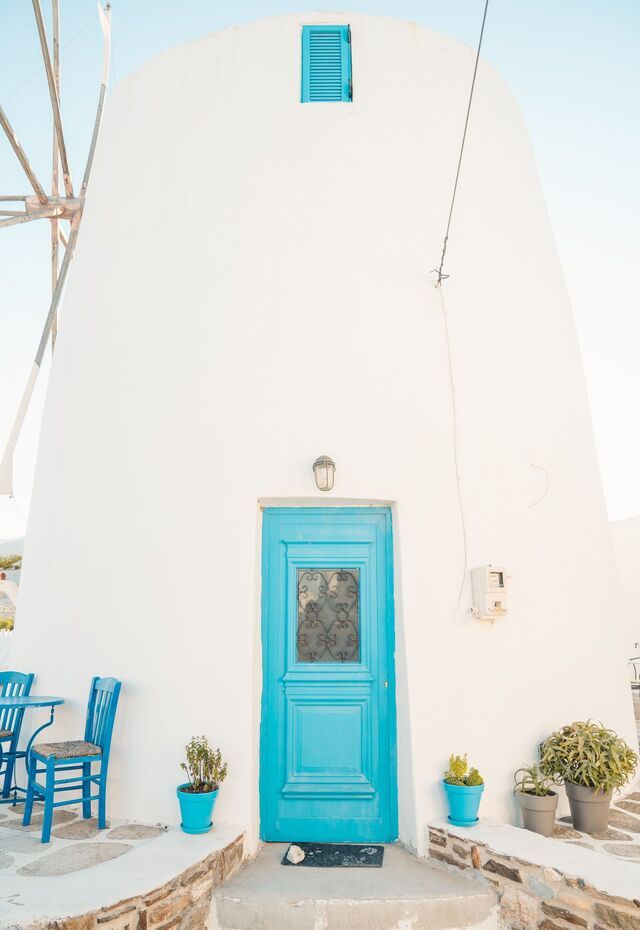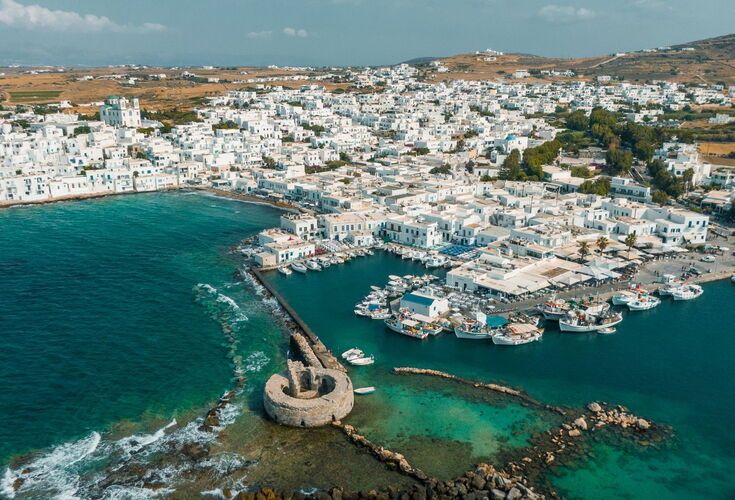Escaping to the villages of Paros


OVERVIEW
Ever-popular as a summer holiday island, Paros hides a quiet and authentic side known only to the lucky few. Away from its famed beaches and the towns of Parikia and Naoussa are villages with alleyways so narrow that cars are unable to pass and traditional crafts still being handed down through the generations, as well as beautifully tended shops, homes and churches with geranium-filled courtyards.
A walking tour of Naoussa blends island chic with deep traditions
It is the Cyclades at its most alluring, especially when you find yourself accompanied by just the sound of the wind rustling through pine trees and the full spectrum of aromas and colours of Greece. Every warm welcome of a local and home-cooked meal in a traditional taverna will become a cherished memory.
DON'T MISS
To sample the full authenticity of Paros, start by heading inland to centrally located Lefkes. From here, you move on to a cluster of villages near or by the sea (Prodromos, Marpissa, Marmara and Piso Livadi), meaning you can always sneak in some beach-time. Finally, head back into the hills, ending in the mountain village of Kostos.
Lefkes
One of the prettiest and best-known villages of Paros, built on a verdant hill in the heart of the island, surrounded by pine and olive trees and the smell of oregano and thyme. It was the capital of Paros in the Middle Ages and the Byzantine feel has been preserved in the Church of Agia Triada (with its rare icons) and other chapels dating to the 15th century. But so too is it unmistakably Cycladic (whitewashed houses, blue doors, bougainvillea and windmills). You’ll find plenty of little shops selling local goods (pottery, honey, figs etc) on the main street, called Ramnos, and a couple of folk museums. The view from 300m up is one of the best on Paros and the island you can see just opposite is Naxos.
Prodromos
The Cycladic theme of sugar-cube houses, flowers and tiny churches continues in the neighbouring village of Prodromos (which can be reached from Lefkes by following a paved footpath dating to Byzantine times). You’ll find traditional cafes (where better to enjoy a local delicacy?) set amongst the houses. And just outside the settlement are windmills that have been renovated into houses (prepare for some serious home envy). Together with the village of Marmara, the residents are known as the Arhilohos community, named after an ancient Parian poet. The village itself is named after the icon-filled 17th-century church of Agios Ioannis Prodromos.
Marpissa
Built amphitheatrically on a low hill, cute little Marpissa and its surroundings will get your hiking juices flowing. Its older houses date to the 16-17th century and there are four windmills in the main square. Amongst its attractions, the Church of Metamorfosis tou Sotiros (Transfiguration of the Saviour) stands out, as does the Museum of Sculptures of Perantinos. A bonus is to walk up to the Monastery of Agios Antonios, built by a small medieval city and a Venetian castle. Only the ruins of the castle remain, but a 30min hike is all the more worth it for the impressive view.
Marmara
Named after the marble integrated into the houses and churches and the nearby ancient deposits, Marmara is a semi-mountains farming village, with around 500 residents and plenty of water, surrounded by orchards. There are more blues and whites to enjoy and a windmill that greets you as you enter the village. The main building of the village is the 17th-century church of Taxiarchis. Don’t forget to visit the cheese factory and try the local products in the cafes in the village square.
Piso Livadi
There’s nothing to stop you nipping to the beach after visiting other villages, but coastal Piso Livadi has the advantage of being close to some of Paros’ best-known swimming spots (Golden Beach, Pounda Logaras). But before you do that… Piso Livadi’s many fishing boats supply locals with the freshest seafood. So take a seat in one of the seafront tavernas. You’re in for a treat. You can also catch a day trip to other Cycladic islands from here (Naxos, Ιos, Santorini and Amorgos).
Kostos
Back into the hilly interior for your last stop and to a village that locals refer to the ‘balcony’ of Paros. The view from here of the bay of Molos and Naxos is, indeed, something else. More churches (notably Agios Panteleimon, protector of the village), alleyways and whitewashed houses await. Find yourself a spot in a traditional cafe in the square, order yourself some meze and bottle of souma (a spirit, similar to tsipouro) and let the locals do the rest.
GET PLANNING
Whether you’re setting out from Parikia (Hora) or Naoussa, it’s an easy journey to all of Paros’ villages. Below, are the distances to Lefkes:
- 10.6 km (17mins) from Parikia
- 10.9km (17mins) from Naoussa
- 20.6km (28mins) from Paros Airport
Visiting all the villages in the proposed order is a journey of around 24km.
For details of the bus services between villages, click here.
- All the villages have permanent residents, so it’s possible to visit them all year round.
- Despite their attraction, the villages of Paros never get crowded, so they’re a perfect escape from the island’s more popular beaches and Parikia and Naoussa in June-August.
- Autumn
- Spring
- Summer
- Winter
If you visit all the villages highlighted, you’ll need at least 1 day. The ideal experience is to stay in one of the larger villages and also arrange an organised hiking expedition to enjoy the Parian countryside.


